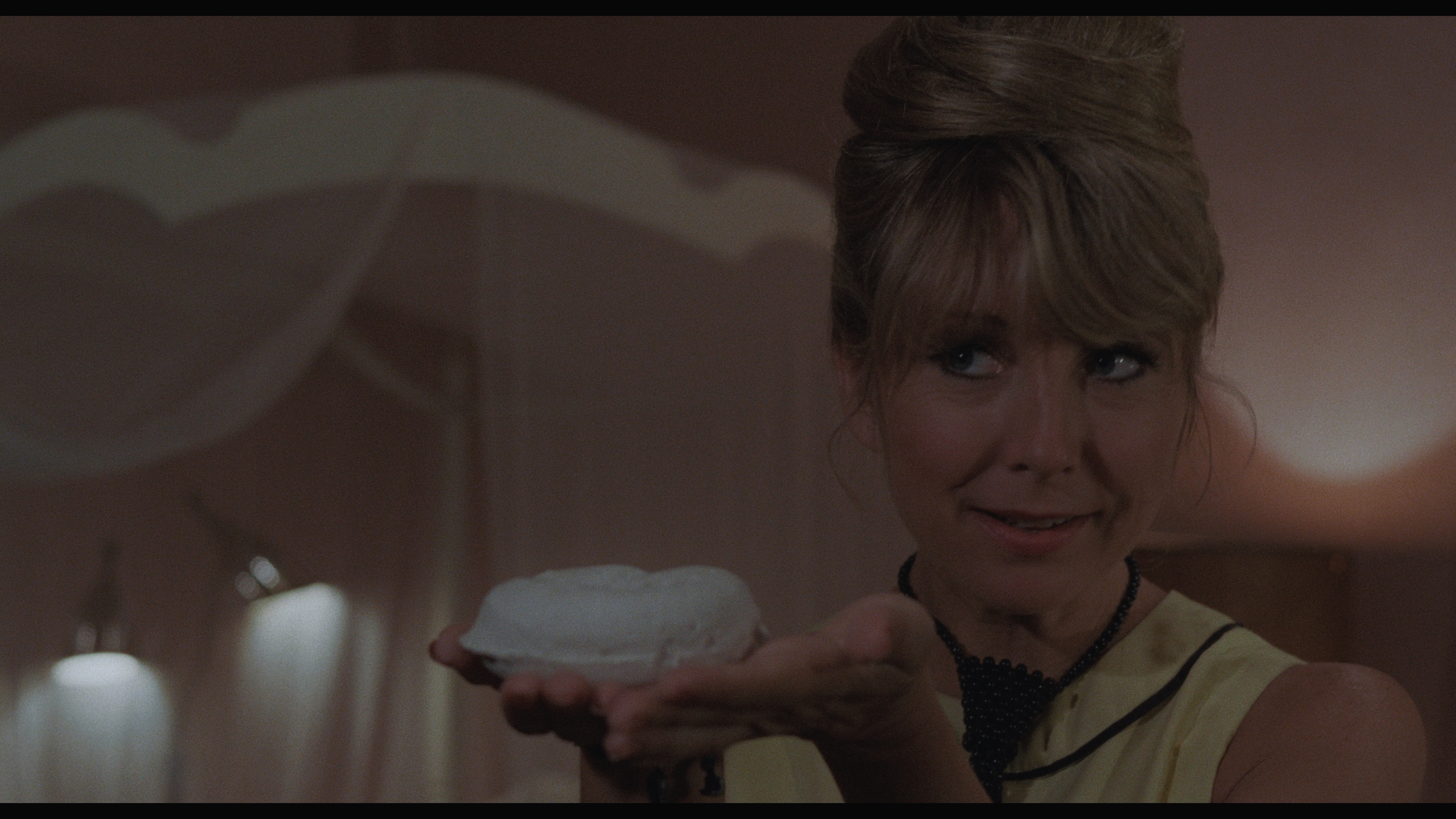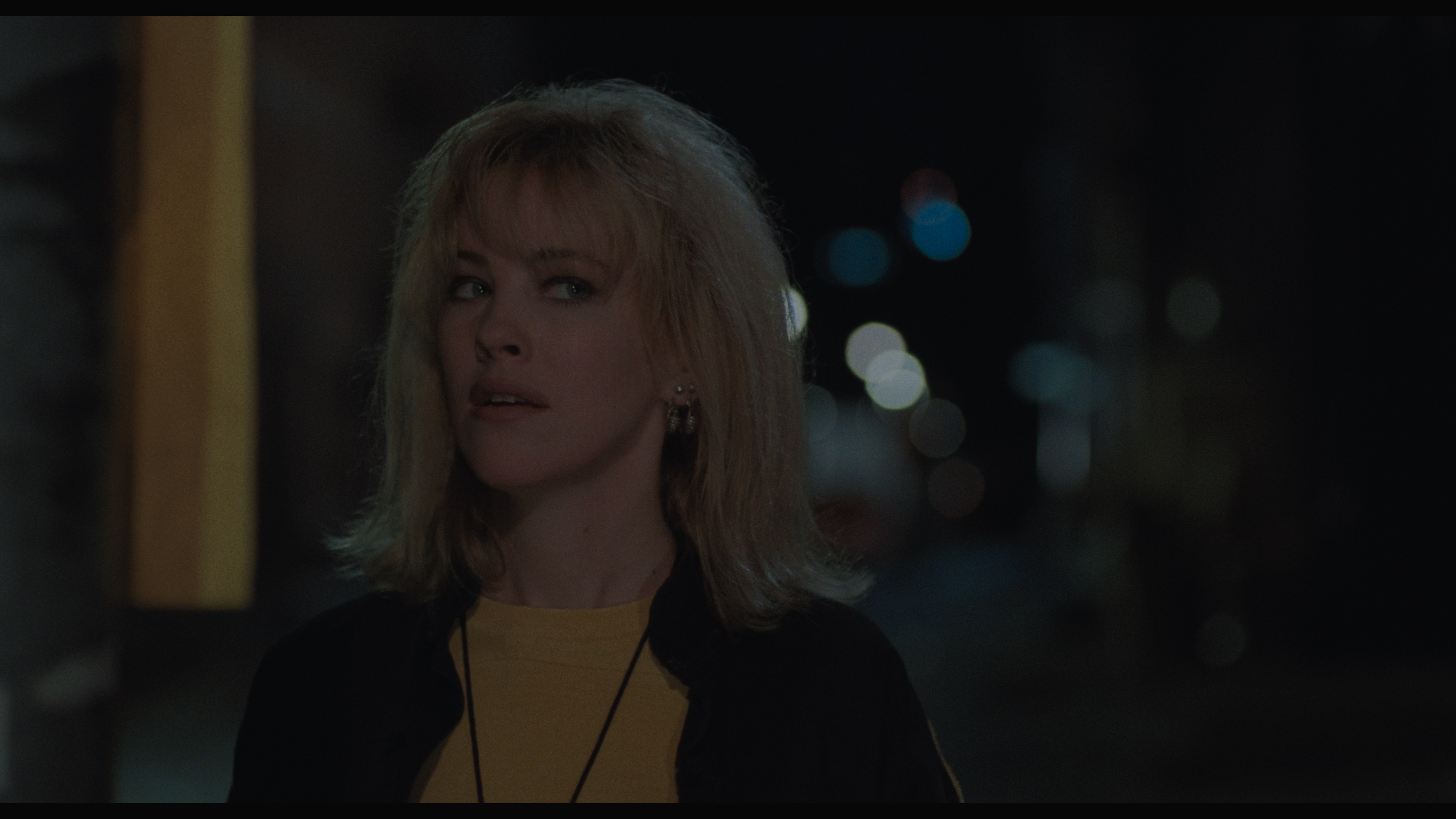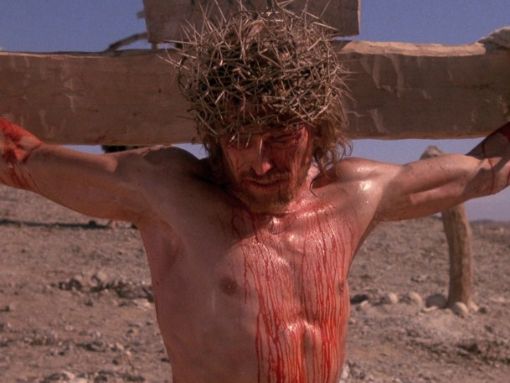After Hours

See more details, packaging, or compare
Synopsis
Desperate to escape his mind-numbing routine, uptown Manhattan office worker Paul Hackett (Griffin Dunne) ventures downtown for a hookup with a mystery woman (Rosanna Arquette). So begins the wildest night of his life, as bizarre occurrences—involving underground-art punks, a distressed waitress, a crazed Mister Softee truck driver, and a bagel-and-cream-cheese paperweight—pile up with anxiety-inducing relentlessness and thwart his attempts to get home. With this Kafkaesque cult classic, Martin Scorsese—abetted by Michael Ballhaus’s kinetic cinematography and scene-stealing supporting turns by Linda Fiorentino, Teri Garr, Catherine O’Hara, and John Heard—directed a darkly comic tale of mistaken identity, turning the desolate night world of 1980s SoHo into a bohemian wonderland of surreal menace.
Picture 9/10
Last released on DVD by Warner Bros. almost two decades ago, The Criterion Collection delivers a much-needed upgrade of Martin Scorsese’s After Hours, presenting the film in 4K on a dual-layer, BD-66 disc in its original aspect ratio of 1.85:1. Presented in Dolby Vision/HDR10, the 2160p/24hz ultra high-definition encode is sourced from a new 4K restoration by Criterion, taken from a scan of the 35mm original camera negative. Criterion also includes a standard dual-layer Blu-ray delivering a 1080p presentation of the film, sourced from the same restoration.
The standard Blu-ray’s high-def looks spectacular all on its own, but the 4K offers enough boost to make things worthwhile. Granted, it’s a dark film, so the increase in resolution doesn’t deliver a staggering amount of new detail. The only real benefit in this regard is how the film’s grain is rendered, which looks quite a bit better here, even though the standard Blu-ray does a decent job. The more significant benefits of getting the film on the format come from adding HDR and Dolby Vision.
The film’s photography always looked a bit murky on DVD, which isn’t surprising considering the format, but the improved contrast and range here really help with the blacks and shadows in this film. Blacks are deeper and inkier, with more detail in the shadows, helping with depth. Color gradations found in interior sequences also look cleaner, and the luminance is kept in check, with nothing coming off unusually bright or hot. I liked how the light also breaks up in the otherwise dark interiors, keeping things appropriately drab. The highlights also look excellent, and I was fond of how the light bounces off the wet streets.
The restoration work has been meticulous, and I don’t recall a single blemish popping up, and I never noticed any digital anomalies. Playing back in HDR and SDR also looked fine. This much-needed update took a long time, but the wait was worth it; this new presentation looks excellent.
































Audio 7/10
Criterion presents the film’s monaural soundtrack in lossless PCM. It's a very active mix despite being limited to a single channel. Fidelity is excellent, and the range can be surprisingly broad. There are a lot of louder moments, but distortion is never an issue, and the audio sounds clean without excessive filtering.
Extras 8/10
Criterion ports all material from Warner’s DVD while adding some new material. They have also taken the liberty to update the original audio commentary featuring Scorsese, Editor Thelma Schoonmaker, director of photography Michael Ballhaus, producer Amy Robinson, and actor/producer Griffin Dunne. The commentary, as it originally played out on the DVD, ended about 15 to 20 minutes early (I couldn’t find my copy, so I was unable to double-check the exact time), so Criterion has recorded some new material with Dunne and Robinson and re-edited the track to fit them in there, the two taking up the entirety of the last section of it. Their new comments focus primarily on the film’s success and the status it has built up through the years, with a few additional stories scattered about through the track. You can differentiate between new and older recordings based on their audio quality and voices.
The remaining participants focus most of their attention on technical aspects, Ballhaus explaining how he successfully captured the film’s look and Schoonmaker talking about the approach to editing a comedy (an early edit was apparently 160 minutes and not funny at all). Scorsese spends most of the track talking about how the film helped him find a new direction after a few failures, including The King of Comedy. He had been working on The Last Temptation of Christ, but the failure of his previous film effectively killed it (he would make it years later), leading him to do some soul-searching since he feared he would never be able to direct again. Eventually, Dunne and Robinson approached him with this film project, and thinking it was one he could turn around quickly, he jumped on the opportunity. From there, he and others discuss the production, from casting and finding the appropriate locations to the film’s more complicated moments. In the case of the latter, it comes up that, despite being only a few seconds long, the shot around a set of keys being thrown down to Dunne ended up being the most complex and dangerous in the film. It sounds like a lengthy video essay could have been constructed to go over that moment, though sadly, nothing of that sort appears on this release.
It's an entertaining track and offers a few surprises. However, supposing one has no time to listen to the track, Criterion includes two supplements that pretty much summarize it, including the 2004 DVD’s making-of-featurette Filming For Your Life, running 19 minutes, and a new interview between Scorsese and writer Fran Lebowitz, running about 20 minutes. The making-of—which features Scorsese, Schoonmaker, Dunne, and Robinson—covers most of the same ground covered in the track but at least expands on a few details, even getting more into their quest to find the perfect ending.
The Scorsese/Lebowitz interview covers new ground if only because it’s more of a reflection on the film and how it captures that particular period of New York, from crazy cab drivers to Soho being a ghost town (this, of course, allowed them to easily film at night without distraction, outside of the occasional neighbor yelling at them to keep it down). Scorsese then shares what he learned from making a comedy and addresses criticisms brought up around the film through the years, like how women are portrayed. He even muses on how younger audiences may have trouble with the film and its character’s dilemma (a smartphone would have changed things, I would have to assume), further cementing how the film is really of its time.
Criterion also includes a new 18-minute feature about The Look of After Hours, presented as a visual essay narrated by production designer Jeffrey Townsend and costume designer Rita Ryack. The two had a minimal budget to work with, with no money at all in some situations, so it called for many instances of just making do with what was available, including how a loft was continually repurposed to represent each apartment that appears in the film. The desired result for both designers was to create the “feeling of discomfort” Dunne’s character would be experiencing throughout, and the two explain how they did that through settings or the costumes. Riyack also describes how she wanted the clothes to reflect or enhance each character’s personality and offers various examples. It’s a nicely assembled piece.
The disc then closes with the film’s trailer, and seven deleted scenes that I’m sure are the same ones found on the old disc, though they look to be from newer scans. There is an excellent bit with Catharine O’Hara that I assume was cut so she didn’t come off too unhinged, along with a great moment featuring Will Patton at the piano. John Heard’s character also receives more time, as does Dick Miller, and there is even an earlier reveal about Verna Bloom’s character. The scenes are all quite good on their own, but I assume they killed the film's pacing in some way, and with Scorsese concerned about pacing (as he stresses through the features), they needed to be taken out.
The release lacks a third-party academic contribution, though Sheila O’Malley fills the gap a bit through her essay included in the insert (which also features a fun design). There isn’t much more to it than what Warner had already added to their edition, but the features still provide a thorough look into the film’s production and how it would steer Scorsese’s career.
(The UHD only includes the audio commentary as a feature. All other features are found on the standard Blu-ray disc.)
Closing
The new 4K presentation makes this edition more than worth picking up, even if the features leave room for improvement.









